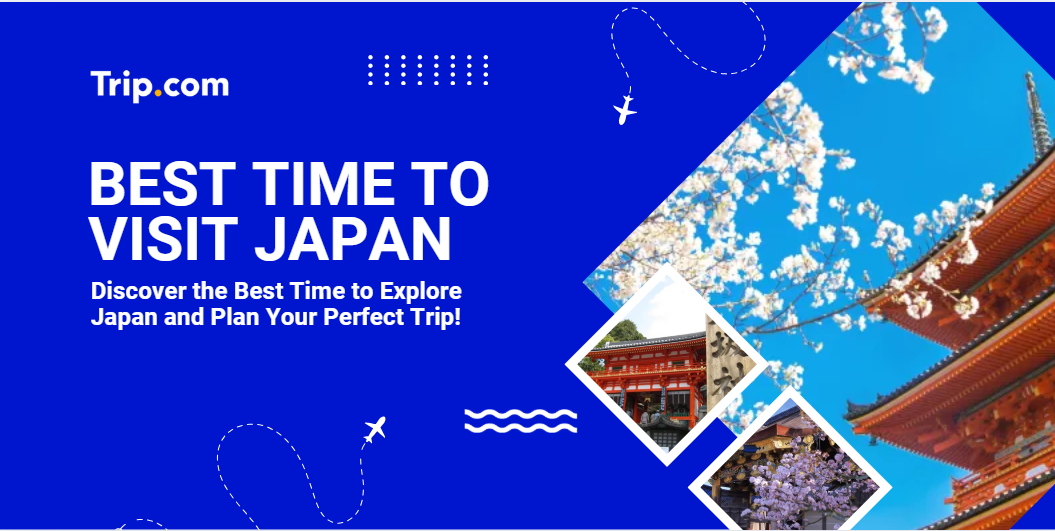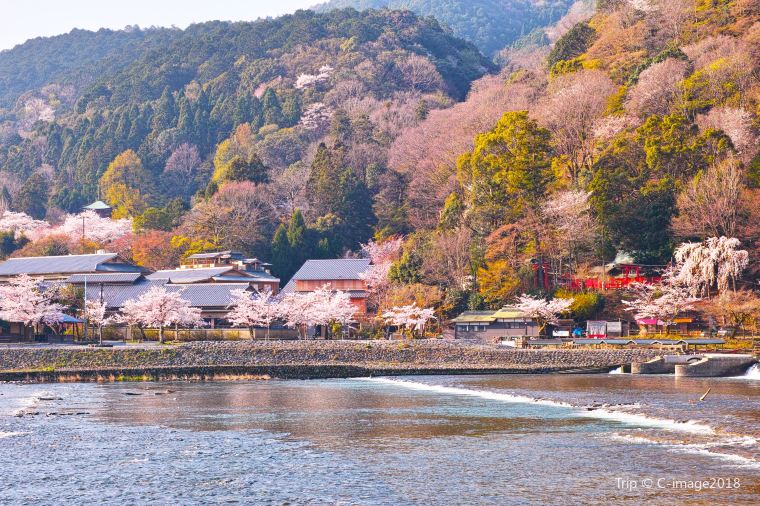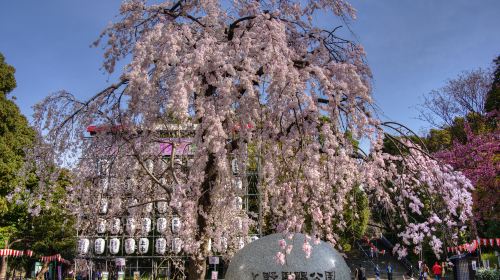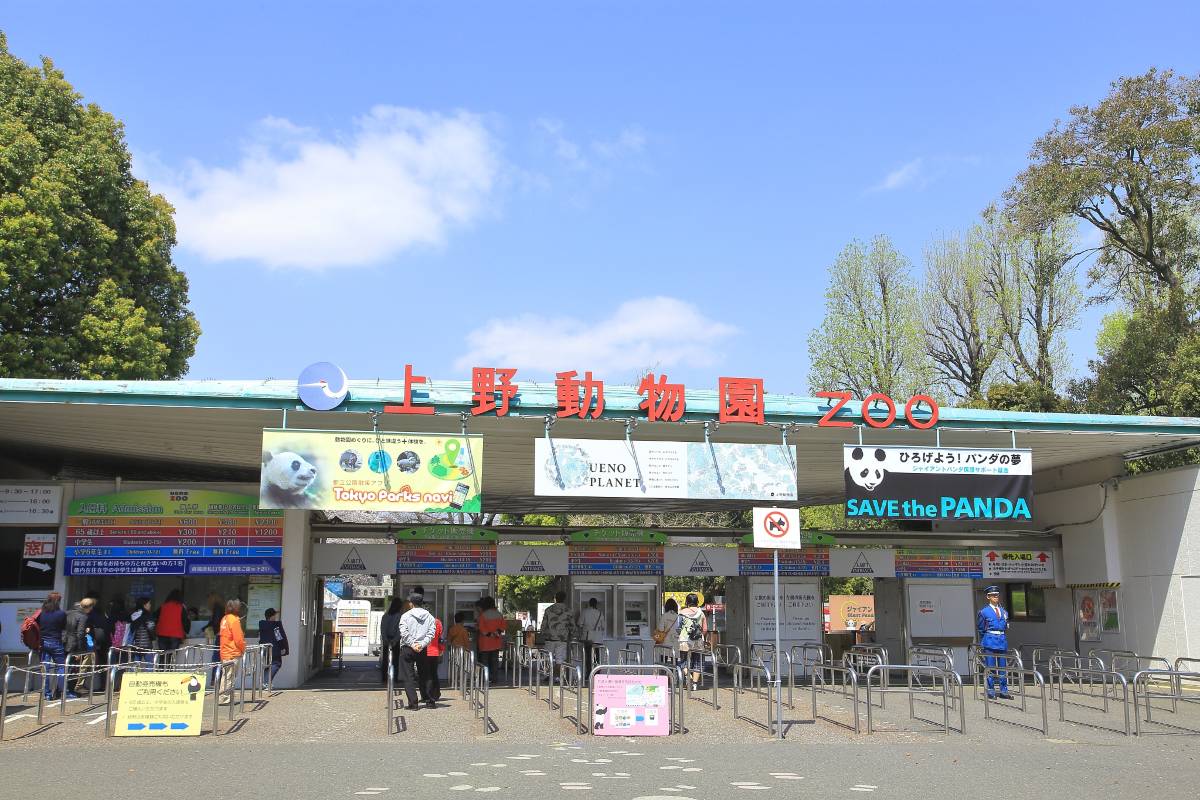
A land where ancient traditions meet futuristic innovation, Japan is a country that captivates at every turn! From the neon-lit streets of Tokyo to the serene temples of Kyoto, the powdery slopes of Hokkaido to the tropical shores of Okinawa, every season brings a new kind of magic. But when is the perfect time to visit? That depends on the adventure you seek! Whether you're chasing cherry blossoms, autumn foliage, or snowy wonderlands ❄️, timing your trip right will make your Japanese journey even more unforgettable! ✨
Weather & Seasons in Japan

Japan, an island nation in East Asia, has a fascinating mix of climates thanks to its long stretch from north to south. From the snowy landscapes of Hokkaido to the tropical beaches of Okinawa, Japan’s weather varies dramatically across its regions! 🌏
Japan has four distinct seasons, each offering a unique travel experience. Summers can be hot and humid, reaching up to 35°C (95°F) in cities like Tokyo and Osaka, while winters bring chilly temperatures, sometimes dropping to -5°C (23°F) in the north. The best time to visit depends on what kind of adventure you're after! 🎒

🌸 Spring (March - May)
Expect mild temperatures, ranging from 8°C to 20°C (46°F - 68°F). Cherry blossoms (sakura) paint the country in shades of pink, attracting tourists from all over the world.
👕 What to wear: Light jackets, comfortable walking shoes, and a stylish hat for sunny days.
🌟 Best seasonal activities: Hanami (cherry blossom viewing) in parks like Ueno and Shinjuku Gyoen, visiting Kyoto’s temples, and experiencing flower festivals.
🎊 Local events: Hanami festivals, Takayama Spring Festival, and Golden Week (late April - early May).

☀️ Summer (June - August)
Summers are hot and humid, with temperatures between 25°C and 35°C (77°F - 95°F). The rainy season (tsuyu) starts in June, but by mid-July, summer festivals and fireworks light up the sky!
👚 What to wear: Breathable clothes, sunscreen, and a handheld fan (trust me, it helps!).
🌟 Best seasonal activities: Hiking in the Japanese Alps, chilling at Okinawa’s beaches, and joining colorful summer festivals.
🎆 Local events: Gion Matsuri (Kyoto), Sumida River Fireworks (Tokyo), and Fuji Rock Festival.

🍁 Autumn (September - November)
Cooler, more comfortable weather returns, with temperatures ranging from 10°C to 22°C (50°F - 72°F). Autumn foliage (koyo) transforms Japan into a stunning red, orange, and gold wonderland! 🍂
🧥 What to wear: Light sweaters, a warm jacket for evenings, and comfy shoes for exploring.
🌟 Best seasonal activities: Leaf-peeping in Kyoto’s temples, scenic train rides through the countryside, and trying seasonal delicacies like roasted chestnuts.
🍁 Local events: Jidai Matsuri (Kyoto), Momiji festivals, and the Tokyo Ramen Show.

❄️ Winter (December - February)
Northern Japan turns into a winter paradise, with Hokkaido and Nagano becoming prime spots for skiing and snowboarding. Temperatures range from -5°C to 10°C (23°F - 50°F), depending on the region.
🧣 What to wear: Thick jackets, gloves, heat packs (buy from convenience stores—they’re lifesavers!).
🌟 Best seasonal activities: Soaking in onsen (hot springs), skiing in Niseko, and exploring illuminations in Tokyo and Osaka.
🎎 Local events: Sapporo Snow Festival, New Year celebrations, and Christmas light displays.
Best Time to Visit Japan – Month-by-Month Guide

Japan’s weather shifts beautifully throughout the year! Whether you're chasing cherry blossoms, vibrant autumn leaves, or powdery snow for winter sports, there's a perfect month for your trip. Here's a breakdown of what to expect each month:
Month | Temperature (°C/°F) | Rainfall (mm/inches) | Traveler Insights 🌏 |
January | -5°C to 10°C (23°F - 50°F) | 50mm/2in | Best for snow activities! Visit Hokkaido or Nagano for skiing. Avoid Tokyo Disneyland—it’s super crowded for New Year! |
February | -3°C to 11°C (26°F - 52°F) | 60mm/2.3in | Snow festivals in full swing! Sapporo Snow Festival is a must-see. Pack warm layers! ❄ |
March | 4°C to 15°C (39°F - 59°F) | 100mm/3.9in | Early cherry blossoms in Kyushu! Sakura viewing spots start getting busy. 🌸 |
April | 8°C to 20°C (46°F - 68°F) | 120mm/4.7in | Prime hanami season! Expect large crowds in Tokyo, Kyoto, and Osaka. Plan picnics in advance! |
May | 13°C to 25°C (55°F - 77°F) | 140mm/5.5in | Great weather, but Golden Week makes travel hectic. Book tickets early! |
June | 18°C to 28°C (64°F - 82°F) | 180mm/7in | Rainy season begins—carry an umbrella! Fewer tourists, cheaper accommodations. 🌧️ |
July | 22°C to 33°C (72°F - 91°F) | 150mm/5.9in | Hot & humid! Stay hydrated. Fireworks and summer festivals everywhere! |
August | 23°C to 35°C (73°F - 95°F) | 140mm/5.5in | Climb Mt. Fuji during official season. Wear breathable clothes! 🏔️ |
September | 19°C to 29°C (66°F - 84°F) | 210mm/8.3in | Typhoon season—check weather updates before traveling. |
October | 14°C to 24°C (57°F - 75°F) | 130mm/5.1in | Perfect for autumn foliage! Kyoto’s temples look breathtaking. 🍁 |
November | 9°C to 18°C (48°F - 64°F) | 90mm/3.5in | Stunning red leaves everywhere! Fewer crowds than spring. |
December | 3°C to 12°C (37°F - 54°F) | 60mm/2.3in | Christmas illuminations make Tokyo magical! 🎄 |
Crowds, Costs & Festivals: Choosing the Right Time to Visit Japan

1️⃣ Peak Season (Busiest & Most Popular Months)
📅 Months: Late March–early April (Cherry Blossom Season), late April–early May (Golden Week), mid-July–August (Summer Festivals).
Why It’s Popular:
- Cherry Blossom Season: Parks across Japan turn into stunning pink landscapes, drawing massive crowds for hanami (flower viewing).
- Golden Week: A cluster of national holidays leads to peak domestic travel, making everything more crowded and expensive.
- Summer Festivals: Some of Japan’s biggest festivals, like Gion Matsuri in Kyoto and Tenjin Matsuri in Osaka, happen during this time.
Crowds & Costs:
- Expect fully booked hotels, high flight prices, and long lines at attractions.
- Public transportation is packed, especially during Golden Week.
✅ Pros:
- Ideal weather for sightseeing.
- Vibrant festivals and cultural events.
- Seasonal foods like sakura mochi and shaved ice.
❌ Cons:
- Higher costs for flights and accommodations.
- Overcrowded tourist spots.
💡 Smart Travel Hacks:
- Book in advance to secure better prices.
- Visit early in the day to avoid peak crowds.
- Explore lesser-known spots like Kanazawa or Kamikochi to escape the tourist rush.
2️⃣ Shoulder Season (Balanced Months for Weather & Crowds)
📅 Months: Mid-May–June, September–early October.
Why It’s Ideal:
- Fewer tourists, making travel more relaxed.
- Mild temperatures, great for walking around cities and nature trips.
- Lower prices for flights and accommodations compared to peak season.
👤 Best For:
- Budget-conscious travelers who still want a great experience.
- Those who want to enjoy Japan’s culture without heavy crowds.
3️⃣ Off-Peak Season (Least Crowded & Most Budget-Friendly Time)
📅 Months: December–February (excluding New Year’s period).
Why It’s Less Busy:
- Cold weather keeps some tourists away.
- Post-holiday drop in tourism after the New Year.
Cost & Crowd Levels:
- Cheapest flights & hotels of the year.
- Quiet attractions, except for ski resorts.
✅ Advantages:
- Winter scenery, onsen (hot springs), and illuminations.
- Authentic experiences with fewer tourists around.
❌ Downsides:
- Cold temperatures, especially in northern regions.
- Some attractions may have shorter hours or seasonal closures.
👤 Who Should Travel in Off-Peak Season?
- Budget travelers looking for the best deals.
- Winter sports enthusiasts heading to Hokkaido or Nagano.
4️⃣ Major Festivals & Events That Impact Travel
- Sapporo Snow Festival (February): Famous for its giant snow and ice sculptures.
- Gion Matsuri (July): One of Japan’s biggest festivals with grand parades in Kyoto.
- Obon (August): A Buddhist event with lantern festivals and traditional dances.
- New Year (Late Dec–Early Jan): Huge crowds at shrines, expensive travel, and fully booked hotels.
💡 Impact on Travel:
- Higher prices and limited availability for flights and hotels.
- Popular spots may be overcrowded during major events.
📌 Pro Tip: If you want to experience a festival, book months in advance. If you prefer quieter travel, avoid these periods.
Best Time to Visit Japan: Based on Your Travel Style

1️⃣ Budget Travelers
If you’re looking to explore Japan without breaking the bank, the best time to visit is January to early March and late May to June. These months fall between major holiday seasons, meaning cheaper flights and discounted hotel rates.
💰 Money-saving tips:
- Book flights at least 3 months in advance for the best deals.
- Stay in business hotels or capsule hotels—they’re affordable and clean!
- Get a JR Pass if you’re traveling long distances by train.
- Enjoy 100-yen sushi and conveyor belt ramen to stretch your budget while still indulging in amazing food!
2️⃣ Luxury Travelers
For a high-end experience, visit March to May (cherry blossom season) or October to November (autumn foliage). These seasons offer stunning scenery, perfect weather, and exclusive seasonal experiences.
🌸 Luxury recommendations:
- Stay at the Aman Tokyo or a private ryokan in Kyoto with an onsen bath.
- Dine at Michelin-starred sushi restaurants like Sukiyabashi Jiro.
- Book a private geisha experience in Gion, Kyoto.
- Hire a personal shopping concierge in Ginza for a VIP retail experience.
🚨 Pro tip: Book accommodations and exclusive dining at least 6 months in advance—these spots fill up fast!

3️⃣ Adventure Seekers
If you're an adrenaline junkie, Japan has something for every season!
🏔 For winter sports: December to February is peak ski and snowboard season in Hokkaido and Nagano. 🏄♂️ For beach and surf: Head to Okinawa between June and September for diving, snorkeling, and island-hopping. ⛰ For hiking and trekking: Climb Mount Fuji in July and August, or explore the Alpine Route in spring and autumn.
🔥 Off-the-beaten-path thrill: Try volcano trekking in Sakurajima or cave diving in Iriomote Island!
4️⃣ Cultural Enthusiasts
Japan is a dream for culture lovers, but the best time depends on what you want to experience!
🎎 For festivals:
- July: Witness the massive Gion Matsuri in Kyoto.
- August: Experience the famous Awa Odori dance festival in Tokushima.
- October: Enjoy the Takayama Festival, one of Japan’s most beautiful parades.
🏯 For temples and shrines: Visit in January for Hatsumode (New Year’s shrine visits) or in April when temples are framed by cherry blossoms.
📷 Pro tip: Visit museums and historical sites on weekdays to avoid crowds!

5️⃣ Family Travelers
If you're traveling with kids, timing is everything!
🎡 Best months for family fun:
- March to May – Enjoy cherry blossoms and mild weather, perfect for outdoor parks and Ueno Zoo.
- September to November – Fewer crowds and comfortable weather for Disneyland & DisneySea.
- December – Magical holiday lights, winter festivals, and a dreamy Tokyo Disney Christmas!
🏨 Family-friendly tips:
- Stay at Tokyo Bay hotels for easy access to Disneyland.
- Buy Ghibli Museum tickets in advance—they sell out quickly!
- Visit Nara Park to let kids feed the friendly deer!
Final Tips for Planning Your Trip to Japan

Japan is a dream destination year-round, but if you’re after the best experience, spring (March to May) brings breathtaking cherry blossoms, while autumn (September to November) lights up the country with fiery red and gold foliage. Summer is all about lively festivals, and winter is perfect for skiing and soaking in hot springs. Book your flights to Japan now and find hotels in japan to make your dream trip a reality!
Now that you know the best time to go, all that’s left is to plan your itinerary and pack your bags! Whether you're craving sushi in Tokyo, wandering through Kyoto’s ancient temples, or chasing powder snow in Hokkaido, Japan has something for every traveler. Book your flights and book your hotels today, and get ready for a journey filled with incredible food, rich culture, and unforgettable experiences! ✨
